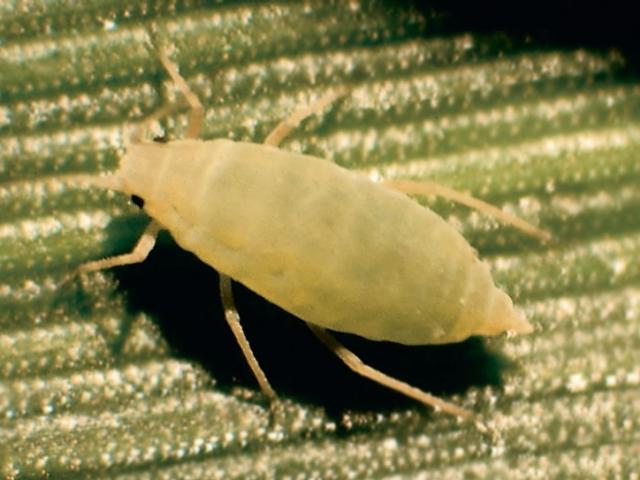Assist grain growers by checking for Russian wheat aphid
Growers may have read recent articles about the detection of Russian wheat aphid in South Australia and now Victoria. While this aphid is not a recognised pest of grape vines we do urge growers to be vigilant and support our grain farmers in looking for this pest in grasses that might be growing in your swards or areas surrounding your vineyards.
Russian wheat aphid is a major pest of wheat, barley and some grasses (Poaceae) which can cause significant yield losses.
Russian wheat aphid has not been detected in WA. As a precaution, it is very important that growers, agronomists and consultants remain vigilant by surveying for aphids and symptoms in cereal crops, grassy weeds and pastures.
For the latest information, please refer to weekly updates of the department’s PestFax newsletter or view the Russian wheat aphid page on the website agric.wa.gov.au
What to look for
Search weedy grasses for aphid pests.
Reporting absence of Russian wheat aphid is as important as reporting pests and symptoms.
Look for leaf curling, stunted plant growth and loss of vigour.
Start plant inspections at the edge of paddocks, where pests often colonise first.
Look for aphids near the base of newly emerged leaves and inspect the leaves and leaf whorls. Examine them closely using a hand lens or smartphone macro lens.
Russian wheat aphid looks similar to other cereal and grass aphids except it has two tiny tails at the rear end and lacks the usual excretion tubes or exhaust pipes on the top of the rear end of the body compared to other cereal aphids.
These pests are approximately 2mm long, pale yellowish green with a fine waxy coating.
Report any suspect aphids or damage as quickly as possible. If no aphids, report zero.
Reporting options
Report any suspect aphids or damage symptoms immediately.
Telephone DAFWA’s Pest and Disease Information Service on freecall 1800 084 881.
It is preferable to use reporting apps to make a report of absence or symptoms of aphids.
Download DAFWA’s MyPestGuide Reporter app to your smart phone, take a photo and follow the prompts on the device. When reporting absence write in the ‘I found textbox’ "no aphids or symptoms".
DAFWA apps can be used in areas that do not have mobile coverage, just refresh when returning to coverage.
People already using PestFax Reporter app can continue to do so.
If you do not have a smart phone you can create an online web report of absence or presence of aphids.
On-farm biosecurity is important
Russian wheat aphid is spread on plant material, machinery, equipment, clothes and on the wind so try to adhere to good paddock hygiene measures to ensure any risk of spreading the pest is minimised.
Do not drive vehicles, machinery or move livestock through crops unless necessary.
Limit the movement of people and equipment near the suspect crop.
Wash hands, and brush down clothes and boots that have been in contact with crops.
Do not openly move or transport affected plant material between properties, at this point, please do not send samples about for identification unless requested – advice will be provided on how to do this safely.
Go to the Farm Biosecurity website for more information on best practices.
For more information contact Dusty Severtson, development officer on +61 (0)8 9368 3249.

